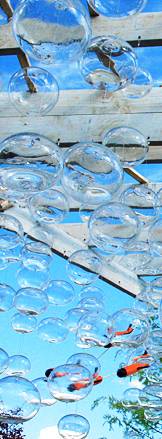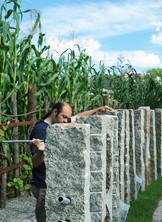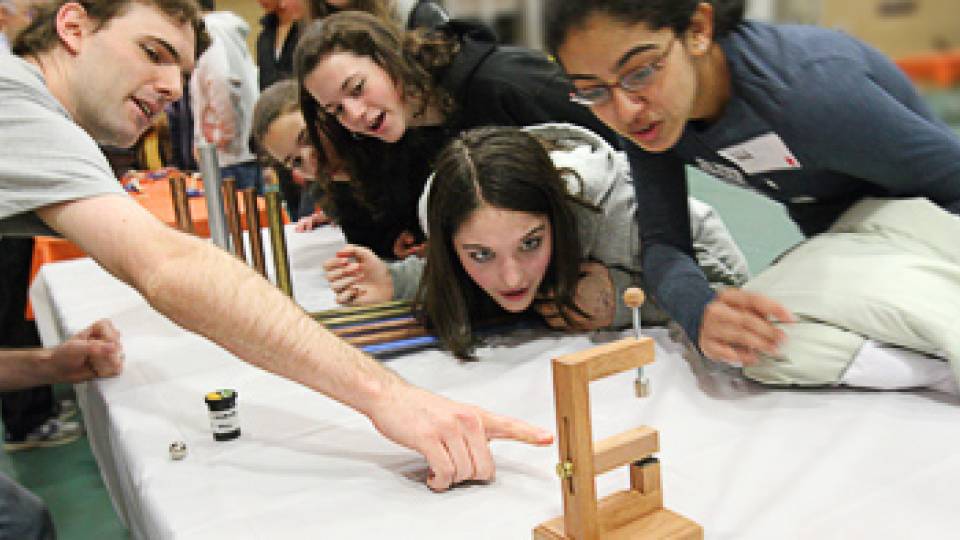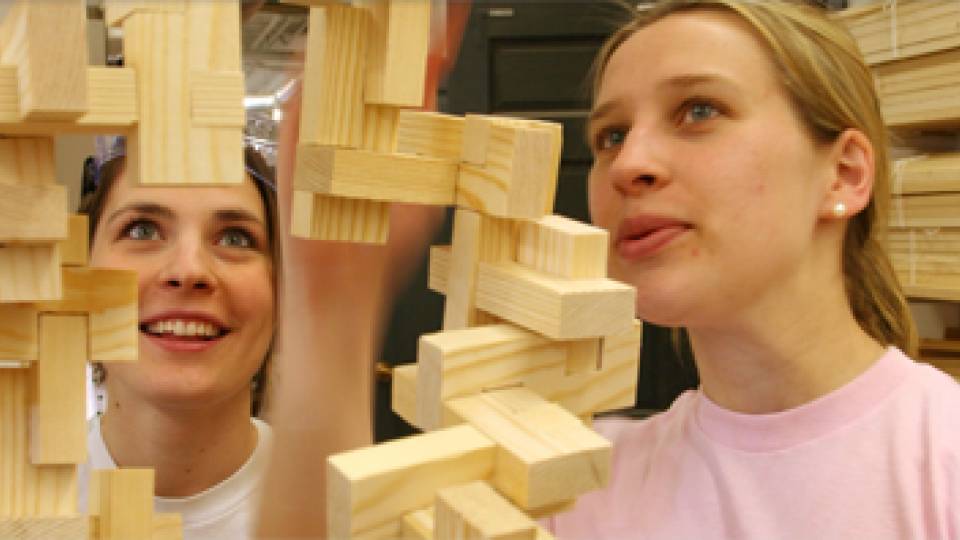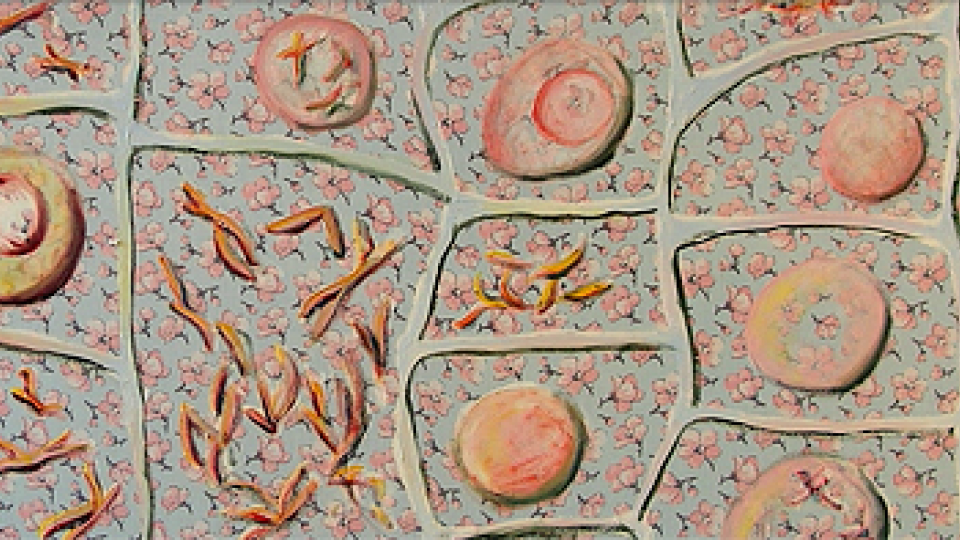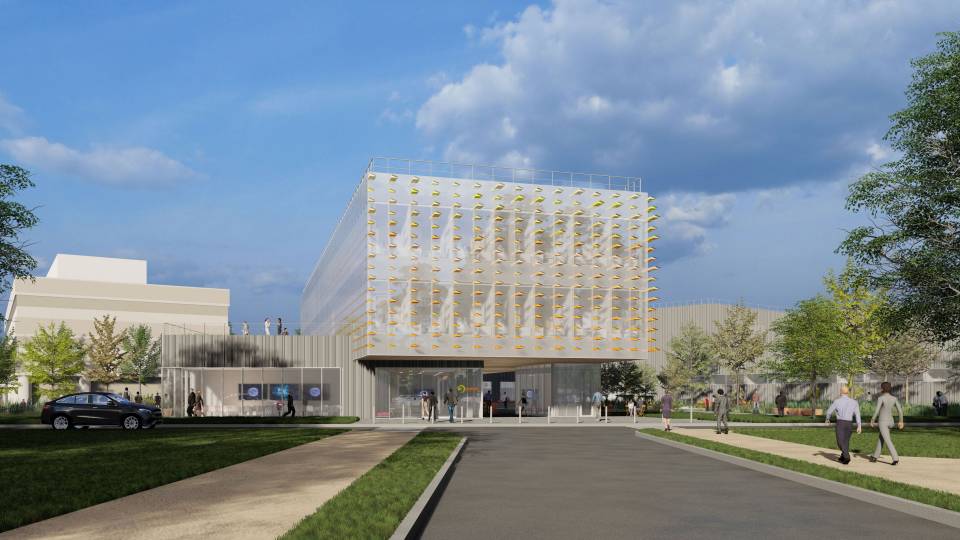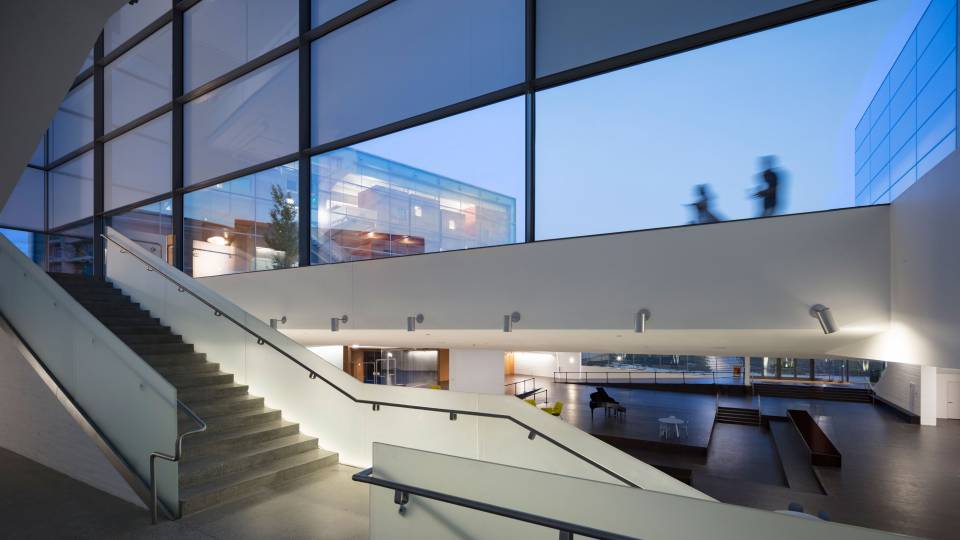From the Sept. 25, 2006, Princeton Weekly Bulletin

Nearly a dozen local artists have collaborated with 10 Princeton University scientists to create an enchanting sculpture garden called Quark Park that brings to life complex scientific concepts.
Sculptors, architects, landscape architects and a glass artist created renderings inspired by the work of Princeton president and molecular biologist Shirley M. Tilghman as well as professors Perry Cook, David Dobkin, Robert Goldston, Lincoln Hollister, Naomi Leonard, George Philander, George Scherer, Paul Steinhardt and James Sturm. Scientists from the Institute for Advanced Study, Rutgers University and private industry also are represented.
The park was built on the lot on Paul Robeson Place, between Chambers and Witherspoon streets, that was home to another garden project by the same creators two years ago. Writers Block was a verdant garden composed of inventive pavilions inspired by and dedicated to the work of 11 writers. The creators of both projects are landscape architects Alan Goodheart and Peter Soderman, and architect Kevin Wilkes.
For the second park, “science was the obvious choice, because there are so many scientists in Princeton and most scientists are relative aliens to the lay public,” said Soderman. “People don’t understand what scientists do.”

A sculpture near the entrance consists of twisted colored wires that travel from two small cone-like cages to a curved grid where dozens of plate-sized colored disks are mounted. Sculptor Nancy Cohen created the piece to illustrate the way mice perceive smells, inspired by research in Tilghman’s field. The colored wires, which represent the pathway from the nose to the brain, light up periodically, thanks to Sturm, the William and Edna Macaleer Professor of Engineering and Applied Science and director of the Princeton Institute for the Science and Technology of Materials. Sturm designed and installed the electroluminescent light wires along with the students in his lab and members of the electrical engineering department staff.
“These are meant to be an almost magical, surprising way to evoke the idea that a scent was perceived and is being sent back to the brain,” said Cohen, who was inspired by viewing photographs of scientific research on smell.
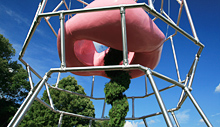
Rein Triefeldt, a kinetic sculptor, created an artistic rendering of the National Compact Stellarator Experiment under construction at the Princeton Plasma Physics Laboratory. The Stellarator will create a hot ionized gas called a plasma and use complex magnets to hold it in place. After visiting the PPPL, which is directed by Goldston, a professor of astrophysical sciences, and watching fusion experiments, Triefeldt, with help from the PPPL, built a 16-foot aluminum skeleton that soars above the park. Inside it floats a hot pink, doughnut-shaped object that represents the plasma.
Quark Park, which will host musical events and science demonstrations in the coming months, is supported by donations from the Office of the President and the Office of Community and Regional Affairs.
